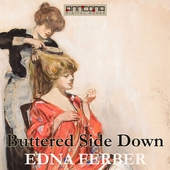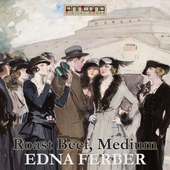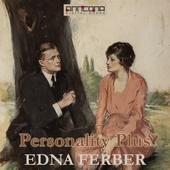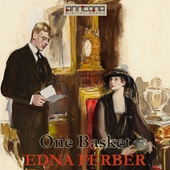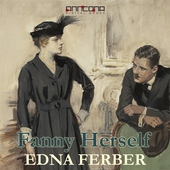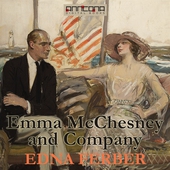
Lägg till önskelistan
Gratis smakprov
- Spara till biblioteket
- Lyssna på smakprov
Dawn O'Hara, The Girl Who Laughed ljudbok
Pris
65 kr
Dawn O'Hara, The Girl Who Laughed was Edna Ferber’s first novel, first published in 1911.
Dawn, a newspaperwoman working in New York, finds herself back home in Michigan on doctor’s orders. Years of living in boarding-houses and working to pay for the care of her brilliant but mentally ill husband, Peter Orme, have taken their toll.
At twenty-eight, Dawn feels like an old woman with no future. But, the loving care of her sister Norah and her family along with the attentions of the handsome ...
Ljudbok
65 kr
Pris
E-Bok
19 kr
Pris
Förlag
Anncona Media
Utgiven
27 November 2015
Längd
5:37
Genrer
Romaner, Skönlitteratur
Språk
English
Format
mp3
Kopieringsskydd
Vattenmärkt
ISBN
9789176055311
Dawn O'Hara, The Girl Who Laughed was Edna Ferber’s first novel, first published in 1911.
Dawn, a newspaperwoman working in New York, finds herself back home in Michigan on doctor’s orders. Years of living in boarding-houses and working to pay for the care of her brilliant but mentally ill husband, Peter Orme, have taken their toll.
At twenty-eight, Dawn feels like an old woman with no future. But, the loving care of her sister Norah and her family along with the attentions of the handsome German doctor, Ernst Von Gerhard, slowly bring Dawn back to life.
With Dr. Von Gerhard’s help, she obtains a newspaper job in Milwaukee and begins a year of new adventures among new people. However, the specter of her husband living in a mental hospital is always present and Dawn fears she may never be free to love again.
Edna Ferber (1885-1968) was an American novelist, short story writer and playwright. Her novels were especially popular and included the Pulitzer Prize-winning So Big (1924), Show Boat (1926; made into the celebrated 1927 musical), Cimarron (1929; made into the 1931 film which won the Academy Award for Best Picture), and Giant (1952; made into the 1956 Hollywood movie).
Ferber's novels generally featured strong female protagonists, along with a rich and diverse collection of supporting characters. She usually highlighted at least one strong secondary character who faced discrimination ethnically or for other reasons; through this technique, Ferber demonstrated her belief that people are people and that the not-so-pretty people have the best character.

